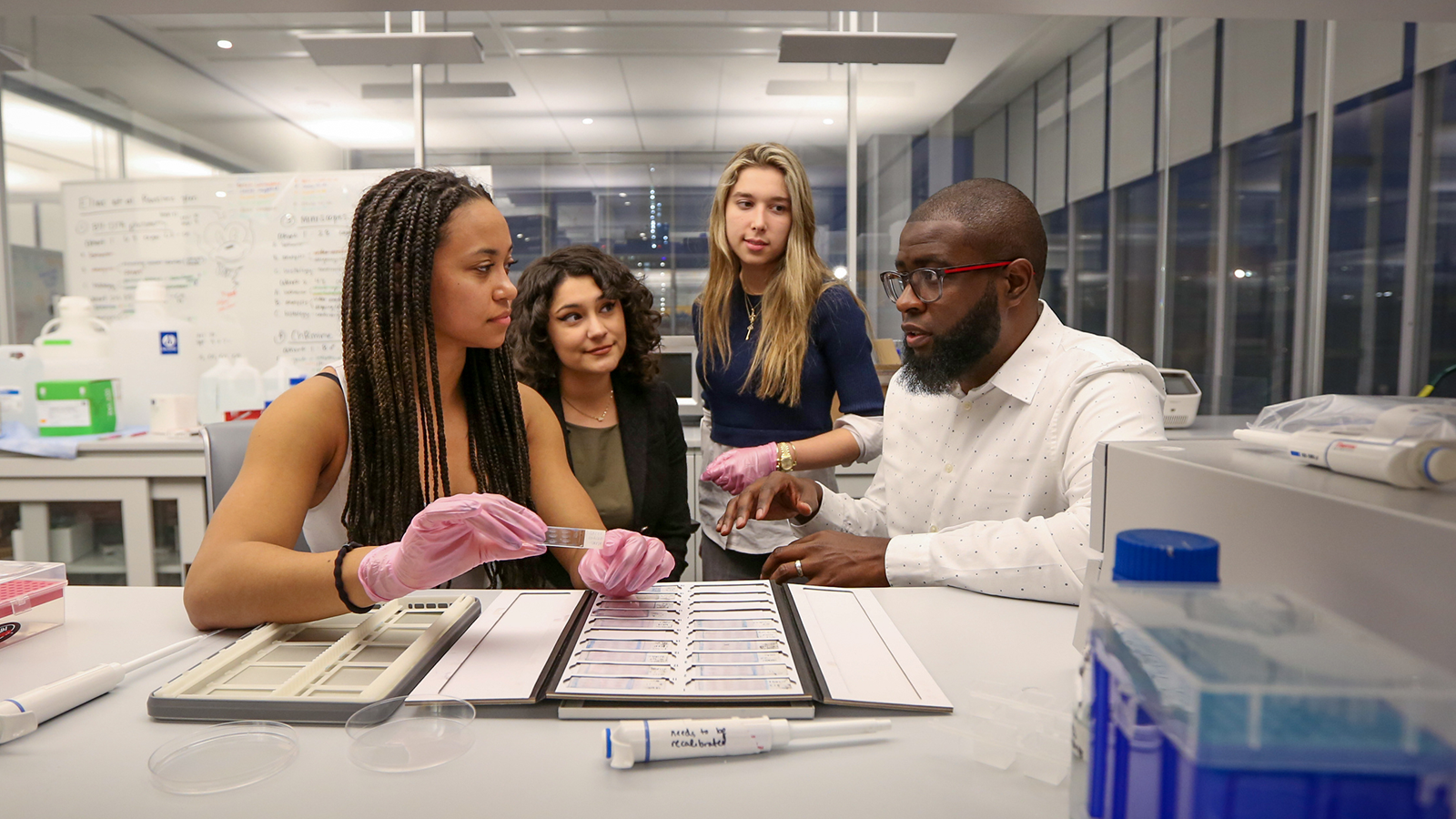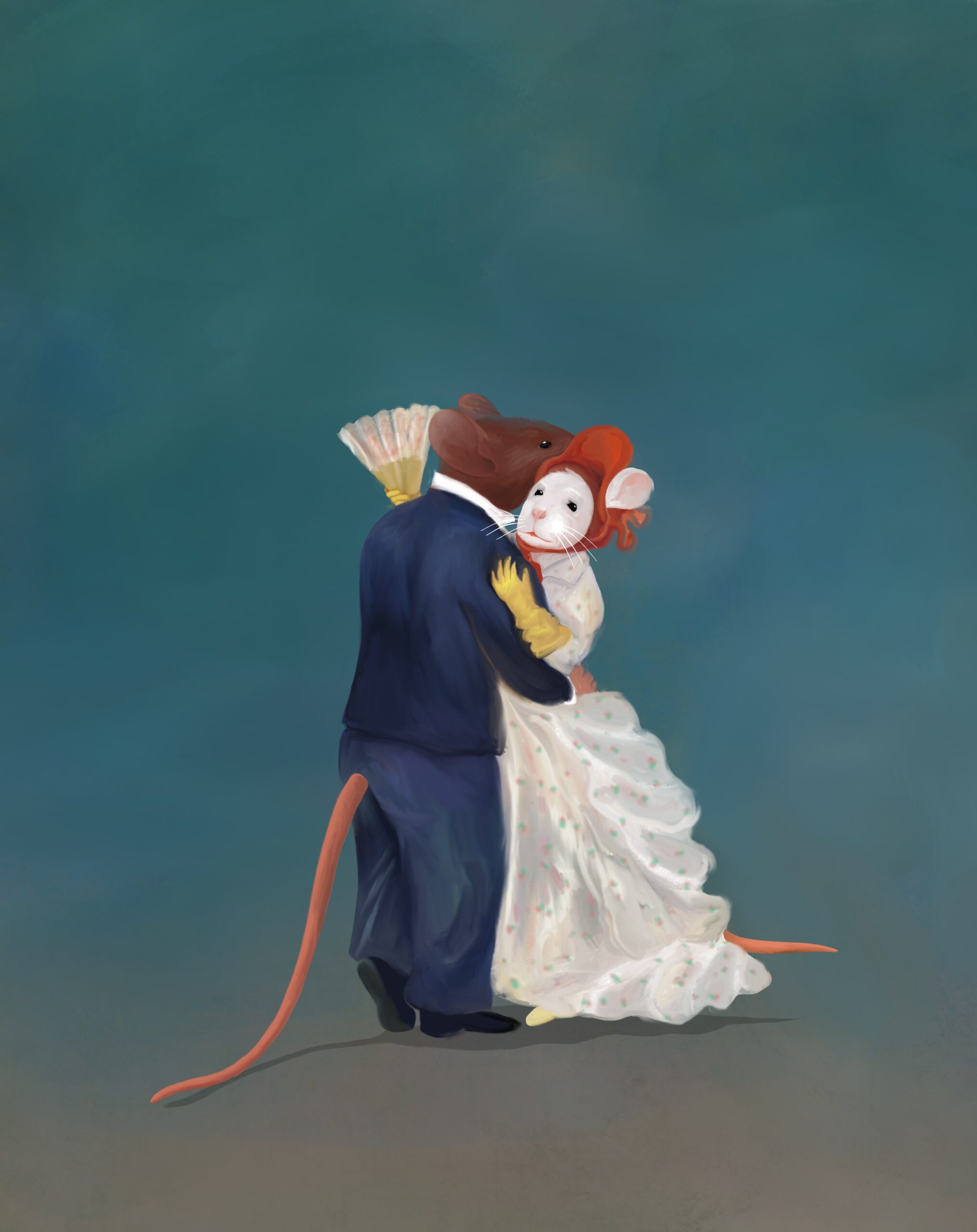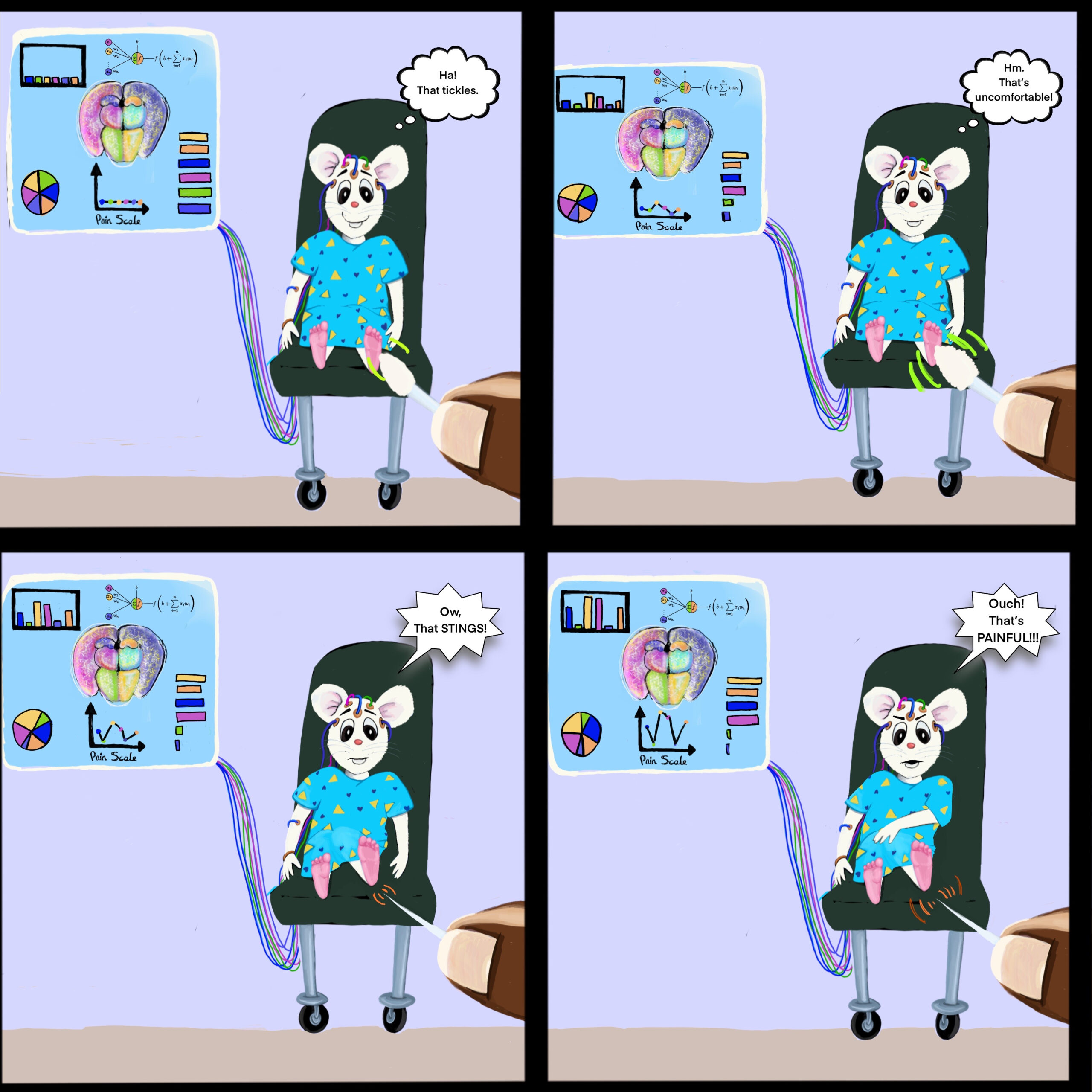research

The Abdus-Saboor lab is interested in how the nervous system differentially encodes responses to tactile sensation on the skin, thus giving rise to the perceptions of pain and pleasure. To address this question the lab uses an interdisciplinary strategy in both mice and naked mole-rats, combining advanced behavioral mapping tools, molecular biology, and neuroscience to uncover genes and pathways for somatosensation – from the periphery to the brain.
In addition to Columbia University, we acknowledge support from the following programs:













Artwork by Julia Kuhl
The Neurobiology of Social Touch
Social touch is the foundation to bonds between loved ones. Despite this general appreciation, how neurons in the skin connect with circuits in the brain to encode rewarding social touch remains poorly understood. We are investigating natural behaviors that rely upon social touch – ranging from mating to lactation and mother-pup interactions. With close observation of behavior at the core, we are elucidating the “skin-brain axis” for social touch using genetic manipulations in the periphery coupled to brain imaging approaches.
Neurobiology of sensation and social interaction in the African naked mole rat
The naked mole-rat hails from East Africa and has adapted to life underground in a eusocial structure with one breeding queen, a handful of breeding males, and a multitude of subservient caste members. A single colony can contain a few dozen or a few hundred animals. We are investigating the neurobiology of social touch in naked mole-rats, with the goal of identifying behaviors, genes, and neural circuits from skin to brain that shape their extremely social lifestyle.
The video on the right shows a naked mole-rat taking a stroll through a tube in our interconnected tunnel system for naked mole-rat colonies here at Columbia University. If you turn the sound on this video, you can listen to some naked mole-rat vocalizations.
